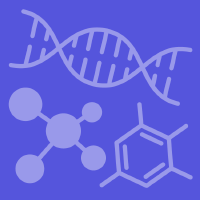Topic Menu
► Topic MenuTopic Editors


Brain Injury, Microcirculation and Tissue Perfusion
Topic Information
Dear Colleagues,
The management of brain perfusion plays a pivotal role in the treatment of brain injury. This aspect in particular is widely used to better treat and prevent secondary brain damage in the bedside setting. Modern neuromonitoring techniques allow us to better understand the effect of our treatments in this setting; nevertheless, there is still a lack of knowledge on this topic. The aim of this Topic is to gather preclinical and clinical studies that are focused on brain perfusion, microcirculation, and brain oxygenation in different forms of acute brain dysfunction. These studies will help clinicians to better understand the underlying mechanisms of brain hypoxia and hypoperfusion in this setting and to potentially improve the quality of care.
Dr. Fabio Silvio Taccone
Dr. Lorenzo Peluso
Topic Editors
Keywords
- cerebral microcirculation
- brain hypoxia
- cerebral perfusion
- cerebral autoregulation
- critical illness
Participating Journals
| Journal Name | Impact Factor | CiteScore | Launched Year | First Decision (median) | APC |
|---|---|---|---|---|---|

Biomolecules
|
5.5 | 8.3 | 2011 | 16.9 Days | CHF 2700 |

BioTech
|
- | 4.4 | 2012 | 19.6 Days | CHF 1600 |

Brain Sciences
|
3.3 | 3.9 | 2011 | 15.6 Days | CHF 2200 |

Cells
|
6.0 | 9.0 | 2012 | 16.6 Days | CHF 2700 |

International Journal of Molecular Sciences
|
5.6 | 7.8 | 2000 | 16.3 Days | CHF 2900 |

Journal of Clinical Medicine
|
3.9 | 5.4 | 2012 | 17.9 Days | CHF 2600 |

Journal of Molecular Pathology
|
- | - | 2020 | 24.9 Days | CHF 1000 |

MDPI Topics is cooperating with Preprints.org and has built a direct connection between MDPI journals and Preprints.org. Authors are encouraged to enjoy the benefits by posting a preprint at Preprints.org prior to publication:
- Immediately share your ideas ahead of publication and establish your research priority;
- Protect your idea from being stolen with this time-stamped preprint article;
- Enhance the exposure and impact of your research;
- Receive feedback from your peers in advance;
- Have it indexed in Web of Science (Preprint Citation Index), Google Scholar, Crossref, SHARE, PrePubMed, Scilit and Europe PMC.

